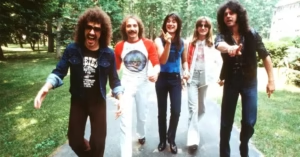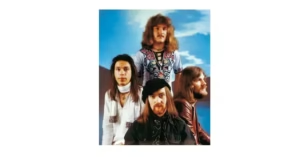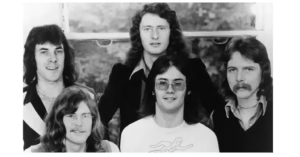Jethro Tull: Masters of Progressive Folk Rock and Flute-Driven Innovation
Jethro Tull. Formation and Origins
Jethro Tull was formed in 1967 in Blackpool, England, and quickly became one of the most distinctive and enduring bands in the world of progressive rock. Fronted by the enigmatic Ian Anderson, who combined flute, acoustic guitar, and eccentric stage presence, the band stood apart for its fusion of rock, classical, folk, jazz, and blues.
The band’s name was taken from the 18th-century English agriculturalist Jethro Tull, a decision made in their early bar-band days — one of many random names tried by their booking agent, but the one that stuck when they began gaining attention.
Jethro Tull. Core Members (Classic Lineup)
While the lineup changed many times throughout the decades, the classic era featured:
- Ian Anderson – Vocals, flute, acoustic guitar, songwriter
- Martin Barre – Electric guitar (1969–2012)
- John Evan – Keyboards
- Jeffrey Hammond – Bass
- Barriemore Barlow – Drums
Anderson has remained the band’s creative engine and iconic figure from its inception through its many evolutions.
Jethro Tull. Musical Style and Evolution
Jethro Tull’s sound has evolved dramatically, but its key characteristics include:
- Folk melodies and instrumentation
- Complex song structures and concept albums
- Bluesy beginnings, morphing into prog epics and classical-inspired rock
- Satirical, poetic, and socially observant lyrics
Their early albums leaned on British blues-rock before transitioning into progressive folk rock with a unique, flute-led style. Tull was never content to remain static — each album marked a new sonic chapter, from rock operas to electronic-influenced records.
Jethro Tull. Landmark Albums and Highlights
Stand Up (1969)
Marked the start of Anderson’s dominance as songwriter and flautist. The album mixes blues-rock with baroque and folk elements, and includes the iconic “Bourée”, based on a piece by Bach.
Aqualung (1971)
A monumental record often cited among the greatest prog rock albums. It explores themes of religion, society, and hypocrisy through songs like “Aqualung,” “Cross-Eyed Mary,” and “Locomotive Breath.”
Thick as a Brick (1972)
A full-length concept album structured as one continuous piece. Meant as a parody of prog excess, it ironically became a defining prog rock masterpiece.
A Passion Play (1973)
Another ambitious, theatrical concept album exploring death, afterlife, and reincarnation, known for its challenging structure and the whimsical “Hare Who Lost His Spectacles” interlude.
Songs from the Wood (1977)
Blended Celtic folk themes with progressive arrangements. Tracks like “Hunting Girl” and “Velvet Green” reflect a rich storytelling tradition rooted in English folklore.
Heavy Horses (1978)
A continuation of their folk-prog style, this album is often seen as the second part of a “pastoral trilogy,” filled with heartfelt odes to rural life.
Jethro Tull. Later Years and Resurgence
Throughout the 1980s and 1990s, Tull adapted to changing musical landscapes with synth-driven sounds (Under Wraps), *harder rock influences, and a return to folk-infused progressive roots in albums like Roots to Branches (1995).
In 1989, Jethro Tull controversially won the first Grammy for Best Hard Rock/Metal Performance, beating Metallica — a decision that has since become a piece of rock history lore.
After a period of dormancy, Ian Anderson revived the band name in the 2020s, releasing:
- The Zealot Gene (2022)
- RökFlöte (2023)
Both albums show that Jethro Tull’s spirit — poetic, challenging, and fiercely individual — remains alive and evolving.
Legacy and Influence
Jethro Tull is widely regarded as one of the most original and genre-defying bands of the progressive rock era. Their blend of folk tradition, classical sensibility, and rock energy opened doors for bands like Genesis, Rush, and Marillion, and their influence continues to echo through the worlds of prog, folk-rock, and metal.
With over 60 million albums sold, Jethro Tull’s music still resonates — a mix of satire, myth, melody, and complexity, all led by a man in a codpiece playing a flute on one leg.
Interesting Facts
- Ian Anderson is arguably the most famous rock flautist of all time.
- The Thick as a Brick album cover is a mock newspaper, featuring fictional articles and jokes throughout.
- The band’s name was suggested by a booking agent — they only kept it because it was the name used during their first successful gig.
- Jethro Tull has never been fully embraced by the Rock and Roll Hall of Fame, despite their lasting legacy.




